Fourth chakra or Anahata: the unconditional love

The Fourth Chakra of the seven main chakras, is designated by the name of Anahata, which in Sanskrit refers to something that has not been touched, the sound produced by two elements that meet but do not collide. It is also known as heart chakra, cordial center, and unconditional love chakra.
Located in the heart region, in the center of the chest, Anahata is the connection between the 3 upper chakras (5th Vishuddha, 6th Anja, 7th Sahasrara) and the lower three (1st Muladhara, 2nd Swadhisthana, 3rd Manipura).
Receive all our tips by email!
Love Astrology? Subscribe Now and Receive Exclusive Content!
The 4th chakra represents acceptance, both internal and external. In Anahata love is born in all its manifestations, and we explore the different moods and compatibility between them. This center of power is linked to the perception of artistic manifestations, understanding, Divine Love, the echo of one’s own energy vibrations and those of the environment, the capacity for transformation and healing.
In the physical body, Anahata governs the heart, the lower part of the lungs, the thymus, the immune system, the skin, the circulatory system, the upper back area (including the rib cage), and the vagus or pneumogastric nerve .
The Fourth Chakra or Anahata
When Anahata works harmoniously, the individual:
- develops peace, reconciliation, compassion and unconditional love;
- raises their self-healing ability;
- lives the gratitude process;
- maintains a positive but realistic and balanced attitude;
- perceives the Universe as the Unity of Everything;
- is able to provide healing (spiritual or physical) to third parties.
If excess energy is detected in the 4th chakra, the subject:
- have symptoms of resentment;
- continually offers support to others waiting for recognition;
- manifests a growing need for their feelings to be validated by others;
- denies the possibility of receiving love.
On the contrary, the low energy in Anahata indicates strong problems of dependence, vulnerability and rejection management; the individual can offer impersonal affection, but when the relationship becomes deep they prefer to flee.
Blockages in the anahata indicate severe depression, decompensated feelings, the subject becomes cold and distant, selfish and suffers from emotional pain; gradually losing the ability to give love, disoriented by their life mission.
The individual begins to feel alone, disconnected from the world, blames the Divinity for their misfortunes, assumes a fatalistic attitude and believes that the Universe conspires against them, so that in their eagerness to have control they can become cruel.
Reactivating the fourth chakra or Anahata
To clean and activate Anahata, it is recommended to walk through natural spaces, where the color green (Anahata tone) predominates, visualizations with elements of this color or pink, and the vocalization of the YAM mantra are also beneficial.
In Aromatherapy, the essential oils of rose, jasmine, pine and tuberose are used to stimulate the 4th Chakra. Likewise, the use of jade, rose quartz, pink kunzite, emerald and pink tourmaline, as an amulet enhancer, is appreciated.
As for physical activities, in addition to yoga, it is useful to perform breathing exercises, practice affirmations of love, forgiveness and gratitude, and help others if the opportunity is offered.
How to naturally stimulate the Fourth Chakra
Spiritual practices and forgiveness
Spiritual practices are essential to purify the heart chakra and open it. They allow us to discover our divine nature and to realize that a similar nature inhabits other human beings, as well as all forms of life. There are three main practices: gratitude, forgiveness and giving to others.
Forgiveness, for instance, undoes the bonds that bind us to the past, and allows us to continue to live our lives in the present and the future. In forgiving, it is as if we are getting rid of bulky items and we are making room to share even more love.
Some examples: Express these sincere feelings to someone, do not judge and if this is not possible see in the other the reflection of what we heal (sometimes symbolically), share a moment with animals, to project oneself into a happy future filled with love, to take height and to contemplate the horizon, etc.
Fourth chakra – Stimulating with energy
Some examples: A hug with someone we love or really appreciate, share tenderness with a person, or with a stone, stimulate in the direction of a clock (turning towards your own heart) in front of your chakra (cycle of 3 rotations) with a mineral (preferably green or pink), with a harmonizer, etc.
The Chakras Explained
Get to know everything about all the 7 chakras bellow.

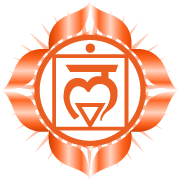
Muladhara
The First Chakra, which is the first of the seven main chakras, is designated by the name of Muladhara (from the Sanskrit mule “root” and adhara “support”). It is also known as radical chakra, root chakra, basal chakra or coxal center.
Read more
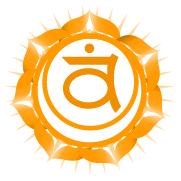
Swadhisthana
The Second Chakra of the seven main chakras is designated by the name of Swadhisthana (from the Sanskrit swa, “the proper” and adhisthana “abode”). It is also known as the sacred chakra or sacred center.
Read more
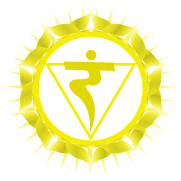
Manipura
An interiorized symbol of solar energy, the third chakra or Manipura is the seat of the Ego and our self. Through it we can affirm our individuality and exercise our free will to build our own life.
Read more
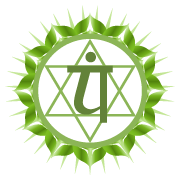
Anahata
The Fourth Chakra of the seven main chakras, is designated by the name of Anahata, which in Sanskrit refers to something that has not been touched, the sound produced by two elements that meet but do not collide. It is also known as heart chakra, cordial center, and unconditional love chakra.
Read more
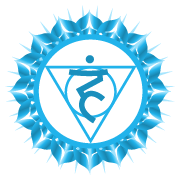
Vishuddha
The fifth chakra is also called throat chakra, or laryngeal chakra. Its Sanskrit name is Vishuddha, meaning “pure”. The problem of the 5th chakra is bound to express its truth in a fair way. This requires that chakras 1 to 4 be well balanced. Located in the throat, between the laryngeal (or nut) prominence and the larynx, Vishuddha represents the link between thoughts and emotions, the way of expressing and communicating.
Read more
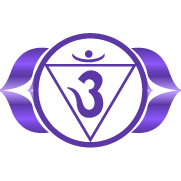
Ajna
The 6th chakra, Ajna, is also called the frontal chakra or 3rd eye. It is the chakra of the inner vision and the extrasensory perception. The 3rd eye allows psychics and therapists to see the aura, to go back into past lives, etc.
Read more
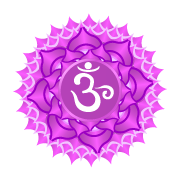
Sanskrit
The seventh chakra is also called Sahasrara, which in Sanskrit language means “multiplied by a thousand”, a clear reference to the lotus of a thousand petals symbol of Illumination. It is the chakra of knowledge, consciousness, intelligence and humility.
Read moreYou may also like:
- Aura cleansing ritual: why you should do it
- Healing gemstones: the most popular
- Forest bathing: why you should try it

